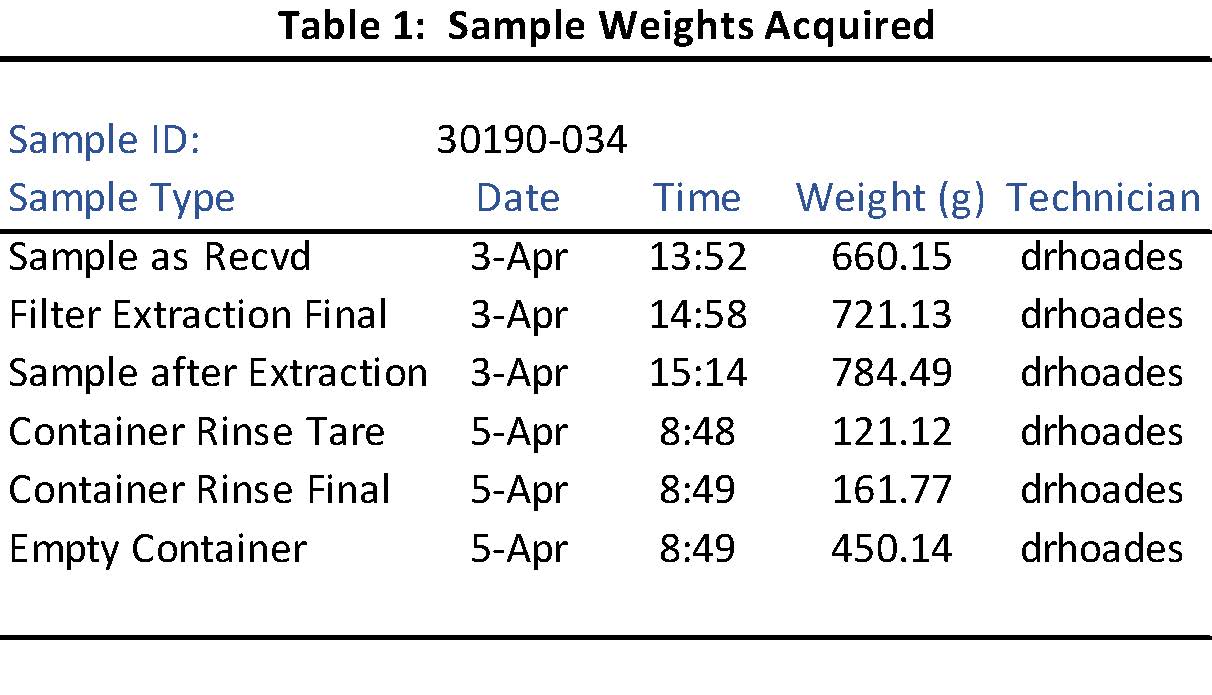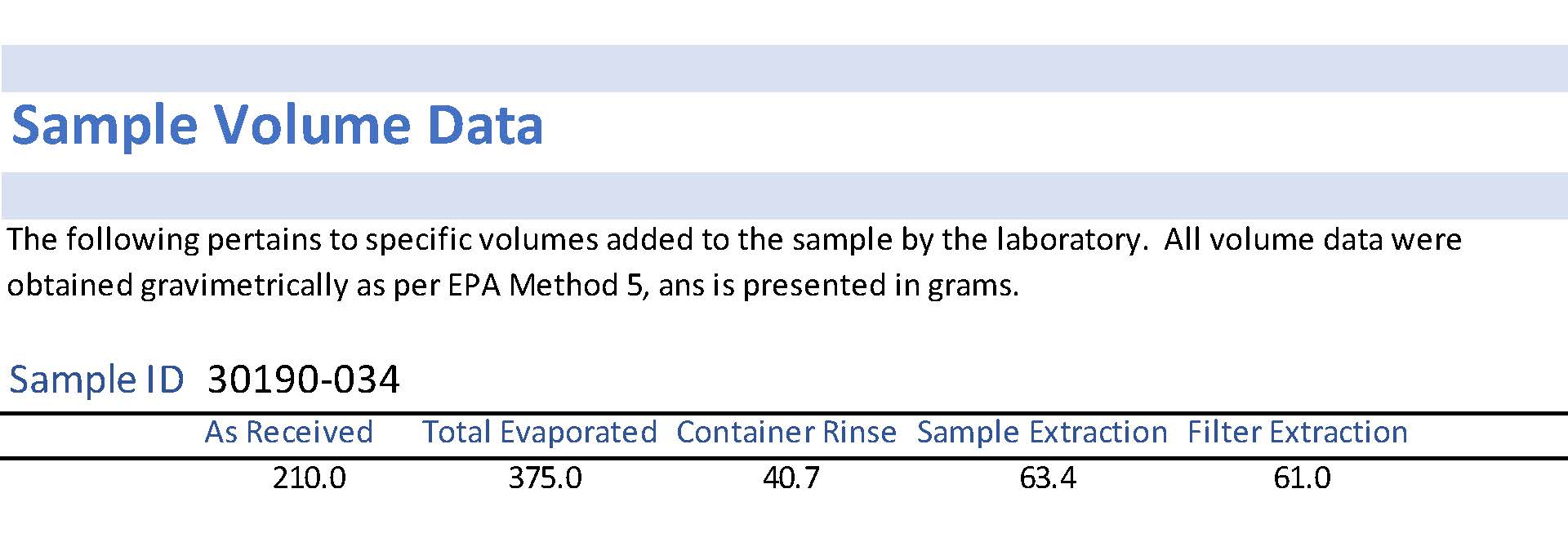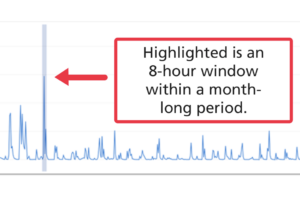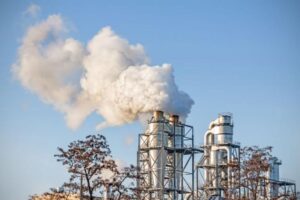Introduction
In general, there are three sample containers received by the laboratory for each EPA Method 202 test run. These are:
- CPM Container #1, Aqueous liquid impinger contents;
- CPM Container #2, Organic rinses ; and
- CPM Container #3, CPM filter sample.
These samples are also accompanied by Field Reagent Blanks (FRB) and Field Train Reagent Blanks (FTRB). Field Train Proof Blanks (FTPB) are also required if your glassware is not baked at 300°C for six hours prior to use. This work will focus on explaining sample volume, measurements and reporting, for a single sample in the laboratory. These measurements include the documentation of the following:
- The amount of sample received (g);
- The amount of liquid used to extract the CPM filter (g);
- The amount of liquid used to extract the Inorganic Fraction into the Organic Fraction; and
- The amount of liquid used to rinse the sample jar into the final evaporation container.
The determination of these reagent volumes is not detailed in EPA Method 202. You should therefore document the steps normally taken in your laboratory in a Standard Operating Procedure (SOP).

Measuring Sample Volumes
EPA Method 202, § 11.1(b) states:
“Measure the liquid in all containers either volumetrically to ±1 mL or gravimetrically to ±0.5 g.”
Clean Air reports these measurements in the Appendix of our Laboratory Reports. The gravimetric option has been chosen for ease of use. Interestingly, the method does not mention the use of a graduated cylinder under § 6, Equipment and Supplies. Although, the use of one could complicate the analyses. It would require extra rinsing and generating laboratory blank samples to prove that cross-contamination has not occurred.
Using the gravimetrics measurement option, a total of six sample weights are acquired. An example of these weights is shown in Table 1, above for an organic fraction.
How Are These Six Weights Used?
The first weight is listed as the “Sample as Reccvd”. This is the weight of the sample bottle at the time of sample receipt. The last weight is listed as “Empty Container”. This is the weight of the empty sample bottle. Direct subtraction of these two weights yields the As-Received sample mass.
The second weight is listed as the “Filter Extraction Final”. This weight is acquired after extraction of the CPM filter. These extract rinses are added to the original sample container. After three extractions, the sample weight is measured. Direct subtraction of the “Sample as Reccvd” from the “Filter Extraction Final” yields “Filter Extraction” weight.
The next weight is listed as the “Sample after Extraction”. This weight is acquired after extraction of the inorganic fraction. The inorganic fraction is extracted three times using hexane with each extract added to the organic fraction container. Subtraction of the “Filter Extraction Final” weight from the “Sample after Extraction” yields the “Sample Extraction” weight.
The next two weights listed are the “Container Rinse Tare” and the “Container Rinse Final”. Subtraction of the Tare from the Final weight yields the amount of reagent used to rinse the sample container into the tared weighing vessel.
An example of these values is shown in a summary as illustrated below:

Summing the above rinse amounts yields the “Total Evaporated” weight of sample. Recording these data could allow a possible blank correction for laboratory and/or field reagents. But EPA Method 202 does not allow this. Instead, a maximum of 2.0 mg is allowed as a subtraction using values from the Field Train Reagent Blank.
Why Don’t the Above Values Match Those Shown in the Certificate of Analysis?
The above example is for an organic sample fraction. Sample volumes are determined by dividing the weight by the liquid density. Liquid density values used for volume conversion calculations are referenced from page 15-25 of the CRC Handbook, 91st Edition:
- Water: 0.9982 g/mL
- Acetone: 0.7902 g/mL
- Methylene Chloride: 1.326 g/mL
- Hexane:0.6594 g/mL
For an organic fraction, the density of hexane is used. For this example, 375 g divided by 0.6594 g/mL yields 569 mL. This would be the value displayed in the Certificate of Analysis.
Summary
Understanding even a simple gravimetrics laboratory report can be cumbersome. Once the terms are explained, data comparisons between samples can become more manageable. The acquisition of six sample bottle weights may seem extraneous, but they can become pertinent if a reagent blank question ever arises. Your laboratory should also perform Laboratory blanks on their reagents. This can ensure that residue is not added from either your reagents, equipment or procedures.
As laboratory blanks are not required by the test method, their use should be documented along with all the above steps in your SOPs.
Clean Air Engineering’s laboratory reports are generated in enough detail to follow every calculated and reported value back to its original data.







